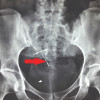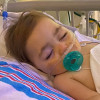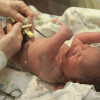
 IJCP Editorial Team
IJCP Editorial Team
Active Play: A Comparative Outlook on Working Vs Stay-At-Home Parents
Parents play a very important role in an infant’s development via interaction and the type of environment they provide for their children. However, several countries are seeing an increasing trend of Working Mothers. With working parents, several studies have been done to visualize the impact of reduced time spent with the infant during the developmental time. It was seen that cognitive development was positively linked to working mothers but on the other hand several studies reported a negative effect on neonates’ motor skills.
Governmental organizations have started advising parents and caregivers on the benefits of active play. Active play for infants can be described as active periods throughout the day with a variety of activities like interactive floor-based play. Active play results in positive cognitive, physical, social, emotional, and language development. The American Academy of Pediatrics has recommended a restricted period to be spent in car seats, bouncy seats, and strollers. Also, 30-60 min should be spent on the infant’s tummy time per day. However, only half of the infants are achieving the specified tummy time per day.
A study was conducted to visualize the difference between the responses of active play in cases of working and stay-at-home parents. Twenty-nine parents were interviewed one at a time in a semi-structured qualitative method based on the theory of planned behavior. The eligibility criteria were based on parental age (> 19 years), infants age (>6 months), and ability of the infant to sit independently without assistance for 10s.
It was found that out of 29 parents, 16 were stay-at-home parents while the rest were working. 89.7% of the participating parents were female. All the parents believed that active play has a positive effect on their child’s development but the stay-at-home parents reported a greater impact of active play on physical (75%), social and emotional (75%), and Cognitive development(75%). The working parents reported 69.2%, 53.8%and 46.2% respectively for similar developmental factors. Also, all the parents irrespective of their status described time (44.4%), environmental concerns (29.6%), and restrictive devices (11.1%) as the most common barrier to active play. However, it was also noted that recommendations for active play were not widely known with working parents expressing a desire to get such advice from their healthcare providers.
Snyder K et al., BMC Public Health. 2021;21(1):250. Published 2021 Jan 30. doi:10.1186/s12889-021-10286-x

IJCP Editorial Team
Comprising seasoned professionals and experts from the medical field, the IJCP editorial team is dedicated to delivering timely and accurate content and thriving to provide attention-grabbing information for the readers. What sets them apart are their diverse expertise, spanning academia, research, and clinical practice, and their dedication to upholding the highest standards of quality and integrity. With a wealth of experience and a commitment to excellence, the IJCP editorial team strives to provide valuable perspectives, the latest trends, and in-depth analyses across various medical domains, all in a way that keeps you interested and engaged.













Please login to comment on this article